
Post Category → Uncategorized
A Gentle Word of Caution: Guard Your Hearts, Tend Your Souls
Pay attention to the welfare of your innermost being,
Proverbs 4:23b (The Passion Translation)
for from there flows the wellspring of life.
I’m concerned about something that may be coming at us over the next few weeks.
Yesterday, a stranger I follow on Twitter solely for fantasy football insights reteweeted the following:
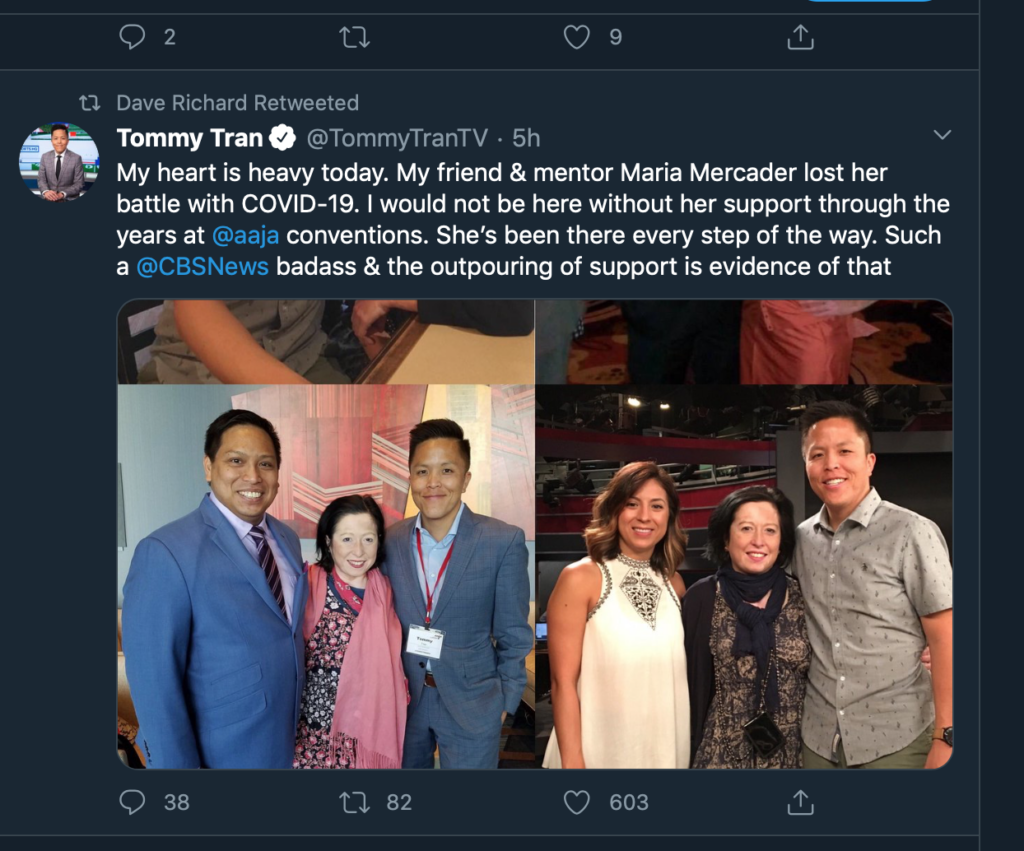
Social media is a funny thing. I don’t know Dave Richard. And I don’t know if he actually knows Tommy Tran. Perhaps he does. Or he could just be one of Dave’s 127,000 Twitter followers. Neverthelss, there it was in my feed. News about the death-by-virus of a woman I never knew, accompanied by pictures of her with the loved-ones who are now grieving her premature death.
I’ve seen quite a few of these over the last few days. I’m moved by every one of them. I’m prompted to pray for those left behind. As a naturally empathetic person, each sends my mind and emotions off in grim directions. This one appeared as I was writing the last paragraph:

As I said, these are only a trickle now. But barring some a miraculous turnaround—and I’m certainly contending for that miracle—that trickle is about to surge into a flood.
We’re in the early stages of the first global crisis of the social media age. It’s easy to forget how recent a phenomenon social media actually is. It did not exist on September 11, 2001. And it was in its infancy during the onset of the Great Recession of ’08-’09.
Add to the above facts, the reality that most of us are quarantined and spending more time on social media than ever before. This means there’s a freight train headed our way I am compelled to warn you about it. Let me explain.
Over the last few years, huge sections of our soceity have become habituated to publically posting every aspect of their lives, experiences, and feelings. Indeed, it seems that for many, a thing didn’t really happen unless it’s been shared on Instagram.
At the same time, over the last 10 to 12 years, we’ve cultivated a culture of people who feel more significant if they are the victim of, or at mininum, have proximity to, a victim of a tragedy. And the higher profile the tragedy, the more significant they feel if they are touched by it.
This means that nearly every person falling sick over the next few weeks is going to post about it publically on social media. (This is very different than privately emailing family and friends to request prayer and agreement.) Then most of the followers of that person will share that announcment to their networks. And many of those will pass it along to their networks.
And every person who knows that sick person is going to post about it, too. They call it “viral” for a reason.
The same is even more true for deaths. Every death by Covid-19 is going to be endlessly shared through trees of interlocking networks.
It’s understandable that people want to honor their deceased family and friends by announcing their passing on Facebook, Twitter, and Instagram. This is natural. But the viral sharing of those tragic deaths is a certainty. It will travel far, far beyond their small circle of acquaintances.
This all adds up to this reality: If we remain glued to social media when, as some experts are predicting, the daily death count soars to 1,000, 2,000, or more per day, (as it very well might when we reach the peak of our [hopefully] flattened curve,) we will rapidly become swept away in a tsunami of terrible, terrible news.
The danger here is succumbing to the false perception that “everyone” is getting sick. And that everyone getting sick is dying.
It will easily feel that way, but it will not be true. Social media is not real life.
Again, I’m with all those who are contending for an Easter miracle. But if we don’t get it, we at the Cup & Table Co. will embrace the miracle of Passover instead. “It shall not come near us.” And we’ll continue to intercede for our neighborhoods, our city, our state, ouir nation, and the world.
Nevertheless, I need you to know that if that Easter miracle does not manifest, a tsunami of bad news and sadness on social media is almost certainly coming. And I do not want you to be swept away by it.
We’re going to be fine. The Church is going to be fine.
In my business, we’re always talking about the need to raise awareness. But the truth is, there is only so much awareness the human heart can bear.
Perhaps only God is emotionally equipped to know about all the suffering in this world. You and I are not God. In the weeks ahead, be wise. Guard your heart diligently. Tend the garden of your soul.
The Night Paul Harvey was Arrested for Espionage
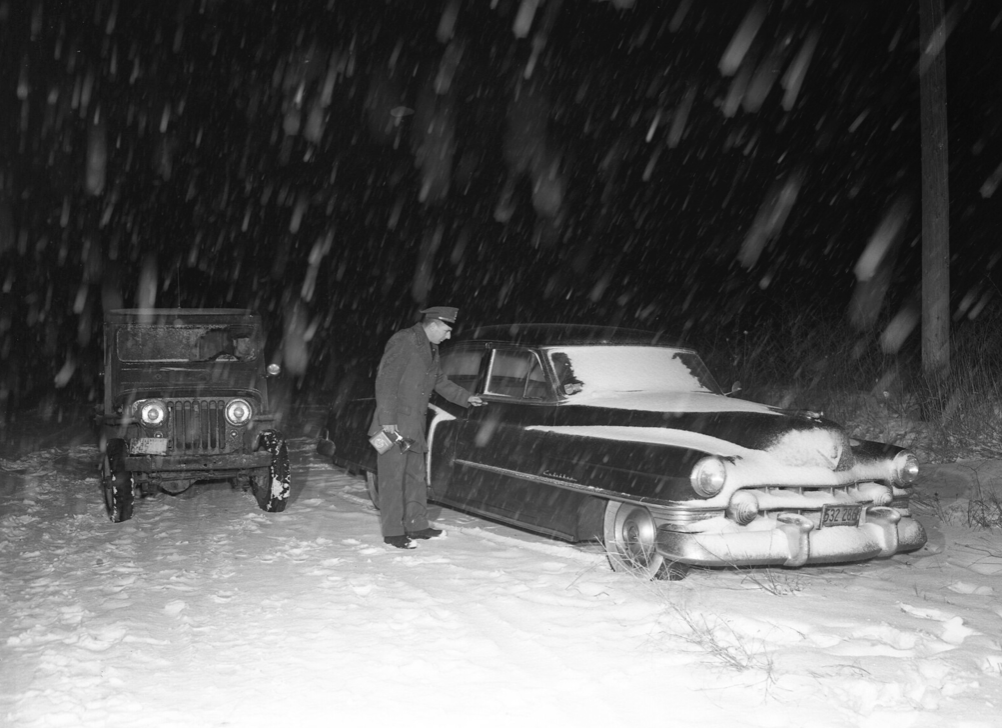
Paul Harvey pulls his long overcoat around him and buttons the top button as his two companions shiver in the cold beside his car. It is nearly 1:00 a.m. on February 6, 1951, and the temperature is below freezing and dropping rapidly.
The three had rendezvoused in Chicago at midnight as planned, ridden together in Paul’s car about thirty miles southwest of the city on U.S. 66, and then pulled off the main road just before reaching the main turnoff for Lemont, Illinois. Then a series of turns on county and dirt farm roads led them into a grove of trees near a 12-foot-high security fence with three strands of barbed wire at the top. Here, within the cover of the trees Paul had killed the headlights, pulled the car off the road, and shut it off. In the distance, beyond that security fence, the men could see the lights of Argonne National Laboratory (ANL), one of the most important and sensitive installations for top secret atomic research in North America.
Now, fewer than sixty days after realizing his dream of becoming a national network news commentator, Paul is about to become national news, for within the hour he will be arrested and placed in federal custody on suspicion of espionage.
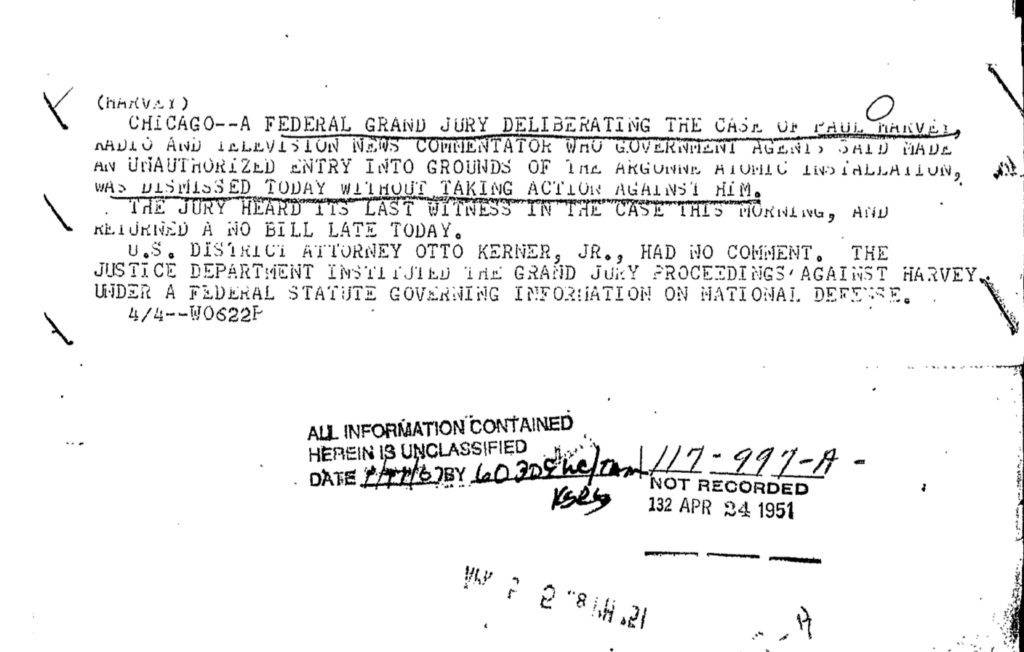
America’s respite from war and the threat of war hadn’t lasted very long. In many respects, it never came at all.
The ink was scarcely dry on the German surrender documents when General George Patton warned U.S. leaders and anyone else who would listen about the threat of Soviet expansionist ambitions. He had requested permission to use his Third Army to push the Russians out of Eastern Europe, where reports of atrocities and oppression by Stalin’s forces were already leaking out. It was clear to everyone that the Soviets had no intention of relinquishing control of any of the blood-soaked territory they had covered on their push to Berlin. And the Soviet forces were in fact weak and vulnerable, having sustained losses of more than 10 million soldiers in the Eastern Front of the war and just as many civilian deaths.
General Eisenhower and newly installed President Truman believed, probably correctly, that the war-weary American public had no stomach for a fight with a country that had been our ally only weeks earlier. Furthermore, there was still Japan to contend with.
A dizzying cascade of events seemed to validate Patton’s warning over the next five years. In March of 1946 Winston Churchill stunned a still-celebrating America by declaring the demise of freedom across half an entire continent. In a speech titled “Sinews of Peace” at little Westminster College in Missouri, Churchill had declared, “From Stettin in the Baltic to Trieste in the Adriatic, an iron curtain has descended across the Continent.” That same year a Soviet-backed insurgency in Greece triggered a civil war in an effort to overthrow the pro-Western government in that country and install a communist dictatorship.
In 1948 the Soviet Union succeeded in installing a puppet government in Czechoslovakia and a few months later triggered a crisis with its blockade of Berlin. To the latter provocation, the West had been forced to respond with the Herculean and costly “Berlin Airlift.” The following year the most populous nation on earth became “Red” China as Mao Se-tung’s communist forces drove pro-Western Chinese president Chiang Kai-shek and his armies off the mainland to the island of Taiwan.
Almost simultaneously, the Soviet Union shocked the West when it successfully tested its first atomic bomb. American military and political leaders had assumed it would take the Soviets years, perhaps decades, to replicate the technological breakthroughs achieved by the U.S. through its super-secret Manhattan Project. The speed with which the Soviets had achieved nuclear parity caused many to suspect that American secrets were being leaked from within. Time would reveal that those suspicions were correct.
Communist Party of America members Julius and Ethel (Greenglass) Rosenberg, along with Ethel’s brother David Greenglass, were instrumental in passing huge quantities of top secret U.S. military technology data to Soviet agents working inside America’s borders. Not only were key secrets about the creation of atomic weapons passed along, the Rosenbergs had also delivered the complete plans for a “proximity fuse,”—vital for the development of missile detonators— and a complete set of design and production drawings for Lockheed’s P-80 Shooting Star jet fighter.
The Rosenbergs’ betrayal of their country was uncovered in 1950, and they were tried, convicted and executed the following year. They went to the electric chair denying any involvement in espionage activity. Forty years later, however, when the collapse of the Soviet Union gave historians and reporters unprecedented access to Kremlin archives. Records from the time confirm that the Rosenbergs were indeed Soviet agents and had been instrumental in transferring nuclear-bomb-making know how to that country. Those records also reveal a labyrinth of other Soviet spying networks operating in the U.S. before, during and after the two nations became allies during World War II. These networks reached into almost every sphere of American life—corporate, academic, artistic and even the very federal government itself.
Some, like the Rosenberg ring, had been exposed. Most never were.
As if all this weren’t enough, there was one additional element about to be thrown into the stew of anxiety and mistrust simmering in the summer of 1950. In late June, communist North Korea, backed, armed and aided by Red China, invaded South Korea. The invasion presented the United Nations, formed in the aftermath of World War II, with the first real test of its “collective security” doctrine and mandate. Led and prodded by Harry Truman, the United Nations intervened on behalf of South Korea. It was almost unbelievable. Less than four years after the bloody, global war to thwart the expansionist aims of the Nazis, America found itself sending young men into harm’s way once more.
Though unreservedly anti-communist, Paul wasn’t so sure this was America’s war to fight. He was growing increasingly concerned about the security and strength of his own nation. Throughout 1945 and beyond, he had been among the voices in America urging suspicion of the Soviets and sounding warnings about clandestine Russian efforts to weaken and de-stabilize the world’s only economic, military, and nuclear superpower. Indeed it was his calm, reasoned eloquence in making the case for vigilance that had caught Joseph Kennedy’s ear and led to the broadcaster’s promotion to the network level.
Thus, when the Rosenberg spying case broke in the middle of 1950, it not only alarmed and dismayed Paul, it confirmed some of his most visceral fears and suspicions. Countering these negative emotions was the exciting knowledge that his elevation to the network was scheduled to start in a few months. He and Angel were already in discussions with the ABC Radio Network’s programming executives in New York about the what, when, and how of this new opportunity. It was an exhilarating time.
Many of the stories dominating the headlines in the opening weeks of 1951 centered around what was coming to be known as “the Cold War”—a term coined by Democratic financier and presidential advisor, Bernard Baruch. Each morning Paul’s newspaper as well as the wire service tickers he pored over would have contained numerous items about Soviet spying, communist subversion in America, and testimony before the House Un-American Activities Committee (HUAC), testimony that grew more alarming with each passing week.
For example, on the morning of January 28, Paul would have opened his Chicago Tribune to find the following headline and article:
College Profs Tell Why They Became Reds: Secret Testimony of 2 Released by Probers
Washington—Two college professors outlined the philosophy that led to their enlistment in the communist movement in secret testimony released today by the house un-American activities committee.
Prof. David Hawkins, 37, Texas-born, now professor of philosophy at the University of Colorado, who worked during the war on the ultra-secret atom bomb project at Los Alamos, N.M. . . .
Professor Kenneth O. May, 35, Oregon-born, now associate professor of mathematics at Carleton college, Northfield, Minn, who lost his teaching position at the University of Berkeley, in 1940 because of communist activities.[i]
Even before moving his broadcast over to the network, Paul had made lax security measures at many of the nation’s sensitive research facilities a regular focus of his commentaries. There had been too many reports of breaches and compromises at civilian and university-run facilities that were doing important work for the military. When reporting one of these incidents, Paul would ask, “When are we going to start taking seriously the protecting of these secrets which are keys to our competitive advantage in the arms race and perhaps the keys to our very survival?”
One of the most important keepers of such secrets was in Paul’s backyard—Argonne National Laboratory (ANL). ANL refers to itself as “America’s first national laboratory” and with good reason. It was established in 1946 as the University of Chicago’s Metallurgical Laboratory, boasted some of the top scientific minds in the country, and was a key part of the Manhattan Project team that successfully developed the first atomic bomb.
By 1950, ANL was not only the U.S. Department of Energy’s oldest research and engineering lab, it was the largest. Some of the most important and sensitive research being done there involved the creation of small, manageable nuclear reactors, the kind that will ultimately enable the creation of nuclear submarines. But Argonne did not have a spotless record where security was concerned.
On February 8, 1949, Argonne made headlines when it was reported that a bottle containing thirty-one grams of enriched uranium was discovered missing from an Argonne vault. An investigation ultimately found that all but about seven grams of the material had been shipped to Oak Ridge National Laboratory in Tennessee. The remaining seven grams were found in a trash container in Argonne’s landfill. The congressional investigation that followed resulted in a tightening of Argonne’s record-keeping procedures for sensitive materials.
Sometime in late 1950 or very early 1951, amid this steady stream of reports about spying and subversion around the nation, Paul received a call from U.S. Congressman Fred Busbey (IL), a personal friend of his. Representative Busbey had someone he thought Paul would be interested in talking to. He couldn’t elaborate over the phone. Paul was intrigued and agreed to meet the man.
The mystery man turned out to be Charles Rogal, a part-time security guard and switchboard operator at ANL. He told the broadcaster a story of sloppy security, poorly followed protocols and under-qualified security staff. To Paul, it sounded like another deeply damaging espionage loss to the Soviets just waiting to happen.
Paul formulated a plan. Whether it was a foolhardy plan or not has been debated for more than five decades. Nevertheless, Paul contacted a man he knew who worked for the Office of Naval Intelligence, John Crowley, and persuaded him to join him and Charles Rogal on that trip out to the security fence in those early morning hours of February 6.
* * * * *
As his two companions watched, Paul began to scale the fence. When he reached the top, however, his overcoat snagged on the barbed wire. He struggled for several minutes to pull free, and before he could get clear, a jeep patrolling the perimeter happened by.
When his companions saw the headlights approaching they slipped off behind some bushes and then ran off through the trees. They eventually came to the main road and caught a ride back to town. Unfortunately for them, they left a wallet and some identifying papers behind in the car.
The following day, puzzled Tribune readers learned of this improbable event:
Paul Harvey Seized Inside Atom Lab Area
Paul H. Aurandt, 3400 Lake Shore Dr., an American Broadcasting Company radio and television newscaster under the name of Paul Harvey, was seized by a guard at the Argonne National Laboratory in Du Page county at 1:10 a.m. yesterday, a few minutes after he had climbed a fence surrounding the laboratory’s restricted area.
News of the arrest was released in a statement by the atomic energy commission only after it was approved “at the highest level” in Washington. Aurandt was turned over to Federal Bureau of Investigation agents for questioning and later released.
Later in the day Aurandt said: “I have been working in conjunction and cooperation with the investigating divisions of several departments of the United States government for the last several months. I am not at liberty nor am I authorized by the governmental investigating divisions to release any story or information concerning the matters upon which I have been working.”[ii]
Follow-up stories appeared in papers across the country for several days thereafter, with much speculation about what government agencies, if any, Paul may have been working with to test ANL’s security measures. Few in the general public or the press seemed inclined to believe that Paul Harvey was a Soviet spy. Federal investigators on the other hand weren’t so sure. Records indicate they didn’t know what to make of the incident.
Everyone had an opinion about it, though. University of Chicago professor and researcher, Dr. Harold Urey, winner of the 1934 Nobel Prize in chemistry, was quoted as saying he was disappointed that guards did not shoot Harvey. When reporters asked accomplice Charles Rogal—who was fired by Argonne after the incident— if there had been any fear of being shot by guards, he said, “Not one of them could shoot and hit the side of a barn.”[iii]
There was much mirth and joking surrounding the whole thing, but it didn’t change the fact that Paul was potentially in serious trouble. The federal government was planning to bring charges that carried a possible 10-year prison term and $10,000 in fines.
A federal grand jury was called. Presiding was a future Illinois governor, U.S. Attorney Otto Kerner. He heard the charges against Paul: “conspiracy to obtain information on national security and transmit it to the public.” In response, the broadcaster requested permission from Kerner to appear before the grand jury. Kerner agreed on one condition: Paul had to first sign a waiver of the right to later claim immunity from prosecution for anything his testimony might reveal.
The accused happily signed it. The professional talker apparently had a high degree of confidence that if he could get the ear of the grand jury, they would view his act as more of a public service than a crime. His appearance was scheduled for March 21.
In the interim, the feds view of Paul apparently softened considerably. The Chicago office of the FBI even filed a supplemental report, indicating that, upon further study, the Justice Department had reached the conclusion “that Aurandt had not willfully violated security laws.” Paul also received a good word from an unexpected source. As the Tribune reported, “Merlin W. Griffith, business agent of the Argonne security guards union, yesterday praised Aurandt for exposing what Griffith charged were security ‘flaws’ at Argonne.”[iv]
Paul’s confidence turned out to be well founded and his appearance must have had its desired effect. On April 4, 1951, the grand jury voted not to indict him. Later the foreman of the grand jury told the press the vote was not even close.
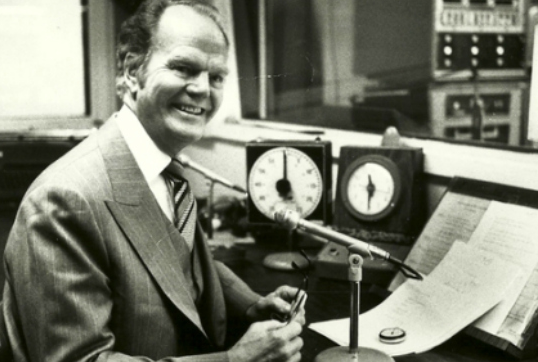
Precisely what Paul was thinking when he climbed the fence that night remains a matter of debate. It was something that, in his later years, he declined to talk about. It seems most improbable that he was working officially on behalf of any government agency. If a high-level department wanted to see if Argonne’s perimeter could be breached, they would almost certainly not recruit a radio newsman in a wool overcoat for the task.
Perhaps a savvy self-marketer who had just gotten himself a national newscast thought it would be a brilliant promotional ploy to breach one of the country’s most sensitive facilities. The headlines would really put him on the map. But this motivation seems deeply out of character with everything else we know about the life and values of Paul Harvey. The most plausible explanation is the most obvious one.
What he learned from Charles Rogal about the security situation at Argonne must have troubled him profoundly. In the wake of the ongoing Rosenberg affair, he was concerned that secrets and technologies vital to the safety and survival of our nation were at risk. He and others had been publicly calling for greater vigilance for several years but without apparent effect. So he took it upon himself to expose the vulnerability the only way he knew how.
It would be like a volunteer fireman setting a small blaze to create a fire break, in hopes of keeping an inferno from destroying his town. The fact that this would-be firefighter could easily have gotten himself shot either didn’t occur to him or didn’t matter.What was clear to Paul in early 1951 was that communism was spreading like a prairie fire in a drought all over the world and that, inexplicably . . . maddeningly . . . a good number of the brightest, most talented and most privileged of his fellow Americans considered this a good thing. Even more bewildering to him was the desire of some of them to bring that fire to our shores.
[i] Edwards, Willard. “College Profs Tell Why They Became Reds.” Chicago Daily Tribune 28 Jan. 1951: p. 32.
[ii] “Paul Harvey Seized Inside Atom Lab Area.” Chicago Daily Tribune 7 Feb. 1951: 8.
[iii] McGregor, Steve. “Argonne passes a reporter’s security test.” Argonne National Laboratory. p. 6 Feb. 1996. 21 Mar. 2009 <http://www.anl.gov/Media_Center/News/History/news960206.html>.
[iv] “Kerner to Read FBI’s Report on Harvey Seizure.” Chicago Daily Tribune 13 Feb. 1951: p. 8.
Re: “Twitter Purge”
A brief follow-up to the previous post. A research study had a group of people quit Facebook for a season and studied their lives. Spoiler alert: They got happier.
My Great Twitter Purge of 2019

I “unfollowed” about 100 good, smart people this weekend. Allow me to explain.
I joined Twitter back in August of 2008, when the relatively new platform was just beginning to gain traction. That was early enough that I was able to register my own name (@DavidHolland) as my Twitter handle—as opposed to something like @DashingDallasDave77 or such.
Eighteen months earlier I’d also registered my name on another emerging social media platform—one that was big with all the college kids. Facebook.
I’d learned in the Internet boom years that when a new platform rolled out, it’s a good idea to stake a claim to your own name on the platform before someone else grabbed it, just in case the platform took off. I’d discovered that there are a lot of David Hollands in the world (especially in England.)
For example, when Google rolled Gmail out in beta form in 2004, I missed being able to register DavidHolland at gmail dot com as my email address, and ended up having to throw my middle initial in there. Ever since I’ve been getting emails intended for some guy in England and I have no doubt that the David Holland with no middle initial has gotten hundreds, probably thousands, of emails intended for me.
Anyway, I noted last August that I was passing my ten year anniversary on Twitter.
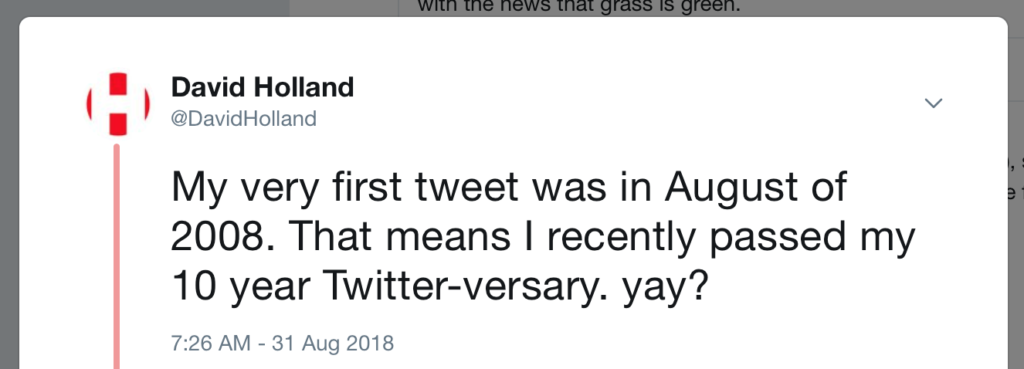
In that decade, Twitter (and Facebook) essentially morphed from a way for friends and family to share where they were and what they were doing into a micro-blogging site for political pundits.
. . . and as a result, Twitter (and Facebook) turned us all into political pundits. We woke up one day and we were all George Will.
Social media, delivered to a device that is constantly in our hands, is addictive. Twitter was my addiction. I have friends and loved ones whose drug of choice is Facebook or Instagram. Neuro-scientists are just now getting a feel for what social media is doing to our brain wiring.

Spoiler alert: It’s not good.
What we know less about is how, in the Obama-Trump era, social media also began to fundamentally warp the fabric of our society. I should also note that Instragram is just as potentially toxic but in different ways for different reasons.
Some platforms fuel rage. Others fuel envy and insecurity. Neither is healthy. But to repeat, Twitter is my drug of choice. And, the only person in the world I can control is me.
And thus I made a decision.
This weekend I ruthlessly culled my Twitter follows with a clear set of criteria in mind. In each case I asked:
“Does this account consistently bring me either joy, laughter, encouragement, wisdom, or useful knowledge of things I enjoy knowing more about?”
Or conversely, “Does this account typically bring me information that makes me want to punch somebody, or at least give them a good and proper tongue lashing to straighten out their thinking?”
If the answer was “yes” to the latter, rather than the former, I unfollowed (or in some cases muted). The “unfollow” did not mean that I didn’t like or admire the person behind the account. It didn’t mean that I wasn’t rooting for them. It didn’t mean I wouldn’t go read that person at length on a blog or in a publication.
It simply meant that I’m now curating my Twitter feed in such a way that I’ll walk away from each session on the platform a happier, wiser, smarter, more hopeful person.
As opposed to a rage-filled, hyper-tensive, pessimist convinced the world is going to hell because it’s filled with horrible people.
What brings me joy is faith, history, science, archeology, maps, space exploration, books, military stuff, sports, and humor. And now my Twitter follows reflect these interests.
Don’t misunderstand. I’m not sticking my head in the sand.
It’s not that I don’t believe in staying informed about our nation and world. I was a highly well-informed individual before social media existed and I will continue to be one long after I’ve purged the culture wars out of my timeline.
What I won’t be is a constantly outraged, worried individual.
As I think about it, social media has probably lowered the depth and breadth of my knowledge about what’s going on in the world. On Twitter and Facebook, everything you read is about the one or two stories that constitute the main ingredient in the outrage du jour.
Each new day brings hundreds of people saying and sharing basically the same thing about one or two things. This crowds out other important, but non-sensational events.
So, this morning over coffee, as is my habit, I reached for my phone to pop open Twitter. I did so knowing that what I would find there would most likely bring me joy.
It did. And I thought: Why didn’t I do this long ago.
Why the Long Arc of the Moral Universe Still Bends Toward Justice
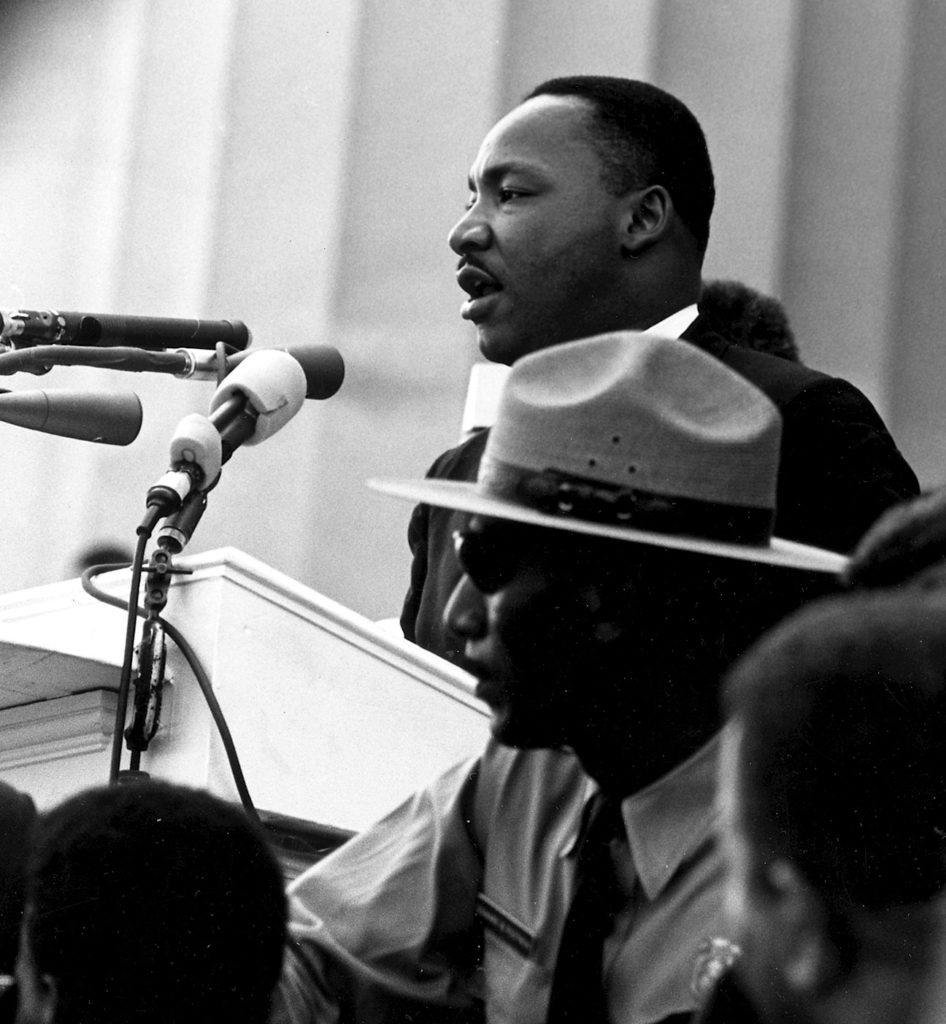
Today the nation marks the Rev. Martin Luther King, Jr. holiday. For some federal and state workers, this means a day off. For many on social media, it means a cue to virtue signal by trotting out a well-known MLK quote. A couple of snippets from the well known, “I Have a Dream” speech will get the most use.
Few Americans outside of academic circles have ever read King at length. We know him almost exclusively in pithy quotes and grainy, black-and-white sound bites. But he was a brilliant, eloquent, persuasive writer. His best-known speeches are really just extensions of his genius as a writer.
His “Letter from Birmingham Jail” is a stunning tour-de-force apologetic for the Civil Rights Movement in the tradition of the great Christian apologists of the second and third centuries. In it, he builds a case, addresses common objections, and appeals to the better angels of the readers’ natures. A taste:
I am cognizant of the interrelatedness of all communities and states. I cannot sit idly by in Atlanta and not be concerned about what happens in Birmingham. Injustice anywhere is a threat to justice everywhere. We are caught in an inescapable network of mutuality, tied in a single garment of destiny.
Poetry. In “Birmingham Jail” King reminds me of the early church father Tertullian of North Africa, who wrote repeatedly to the the Roman authorities pleading the case of the oppressed, persecuted, and scapegoated Christians of the Roman Empire. Tertullian famously warned the Romans:
The more we are mown down by you, the more in number we grow; The blood of the martyrs is the seed of the Church.
One of Rev. King’s most oft-quoted phrases is some variation of: “The arc of the moral universe is long, but it bends toward justice.” (It is sometimes quoted as “the arc of History . . .”) King used this phrase in a 1958 article called “Out of the Long Night” published in The Gospel Messenger—the official publication of The Church of the Brethren.
This quote did not originate with King. In fact, he put the phrase in quote marks in the article to indicate that he was citing a saying that he assumed was already known to the reader. King later repeated the phrase is several speeches. The originator of the saying was a Unitarian abolitionist minister named Theodore Parker, born in 1810.
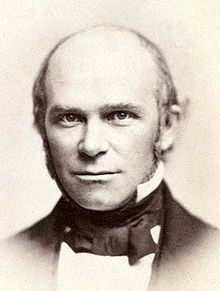
What MLK quoted was a boiled down version of what Rev. Parker originally wrote:
Look at the facts of the world. You see a continual and progressive triumph of the right. I do not pretend to understand the moral universe, the arc is a long one, my eye reaches but little ways. I cannot calculate the curve and complete the figure by the experience of sight; I can divine it by conscience. But from what I see I am sure it bends towards justice.
In both forms, the message rings as true. Doubly so if you’re a student of History. But why? Why has the story of the last 2000 years been one of gradual but consistent upward progress, particular in the West?
The answer, of course, is Christianity . . . or more accurately . . . the presence of the kingdom of God on earth, expanding, unfolding, leavening the cultures of the world like yeast.
The abolition of slavery; the elevation of the status of women in society; respect for private property and the rights of the individual; and the gradual dissolution of class distinctions are all the emerging expressions of the Christ’s emerging kingdom.
It’s tempting and far too easy to focus on what remains to be done. But the kingdom cotinues to expand. The arc still bends toward justice.
Nial Ferguson on Our Volatile Times
I’ll share some thoughts about this shortly.
Early Christmas Gifts
Dear family & friends,
We got a wave of great early Christmas presents this year. Among them, the news that Our Grayson and Jose are expecting (it’s a girl!).
Even better, they’ve decided the little lady should be born a Texan. So they just moved here from Miami (yesterday!). The move was a leap of faith as Jose left a great job in Miami and is now looking for opportunities here. So . . .
If you know of an organization looking for a remarkable young man with customer service and inside sales success in his hip pocket, please let us know.
Here’s how I described Jose to a friend recently:
- Talented Hillsong-Trained-and-Certified Musician
- Technically savvy.
- Very, very good with people both in person and on the phone. Winning personality.
- Smart, adaptable.
- Recently flourishing in customer service and sales contexts.(auto dealership service & parts departments)
- Very conscientious, dependable, strong work ethic.
- Bi-lingual (Spanish)
Shout if you hear of someone looking for a home-run hire.
Our Strange Times
I wish I could time travel. I’d go back ten years and tell my year-2007 self that in 2017:
- Donald Trump is President;
- Tim Tebow is a professional baseball player;
- and Gwen Stefani and Blake Shelton are a thing . . .
Just to see the look on my face.
Silicon Valley Gazillionaires are Prepping Like Crazy
Found this fascinating:
Doomsday Prep for the Super Rich
Snippet:
How did a preoccupation with the apocalypse come to flourish in Silicon Valley, a place known, to the point of cliché, for unstinting confidence in its ability to change the world for the better?
Those impulses are not as contradictory as they seem. Technology rewards the ability to imagine wildly different futures . . .
Bonus:
Many of Asia’s billionaires have been buying private hidey-holes in New Zealand for the last few years:


